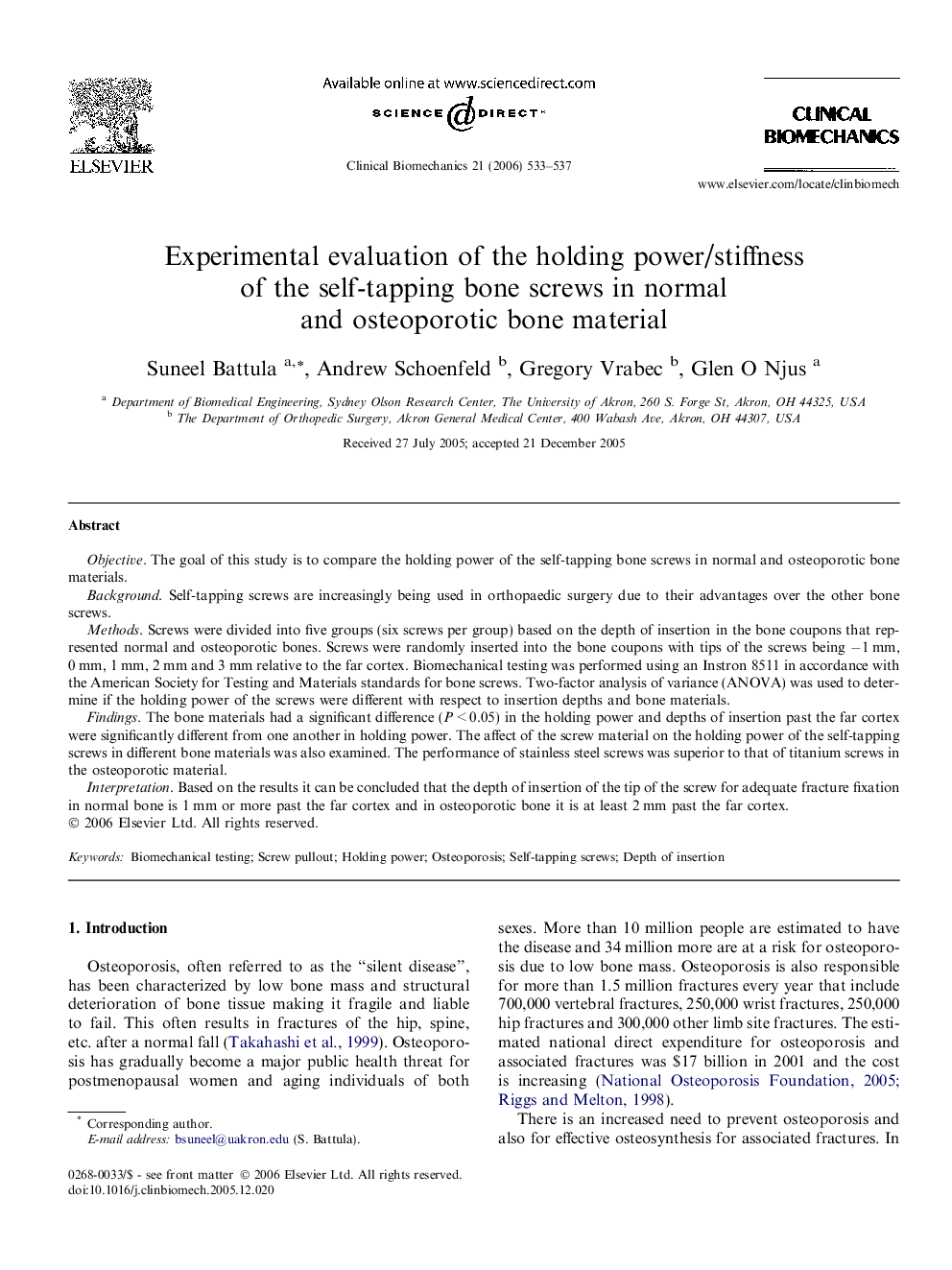| Article ID | Journal | Published Year | Pages | File Type |
|---|---|---|---|---|
| 4051750 | Clinical Biomechanics | 2006 | 5 Pages |
Objective. The goal of this study is to compare the holding power of the self-tapping bone screws in normal and osteoporotic bone materials.Background. Self-tapping screws are increasingly being used in orthopaedic surgery due to their advantages over the other bone screws.Methods. Screws were divided into five groups (six screws per group) based on the depth of insertion in the bone coupons that represented normal and osteoporotic bones. Screws were randomly inserted into the bone coupons with tips of the screws being −1 mm, 0 mm, 1 mm, 2 mm and 3 mm relative to the far cortex. Biomechanical testing was performed using an Instron 8511 in accordance with the American Society for Testing and Materials standards for bone screws. Two-factor analysis of variance (ANOVA) was used to determine if the holding power of the screws were different with respect to insertion depths and bone materials.Findings. The bone materials had a significant difference (P < 0.05) in the holding power and depths of insertion past the far cortex were significantly different from one another in holding power. The affect of the screw material on the holding power of the self-tapping screws in different bone materials was also examined. The performance of stainless steel screws was superior to that of titanium screws in the osteoporotic material.Interpretation. Based on the results it can be concluded that the depth of insertion of the tip of the screw for adequate fracture fixation in normal bone is 1 mm or more past the far cortex and in osteoporotic bone it is at least 2 mm past the far cortex.
